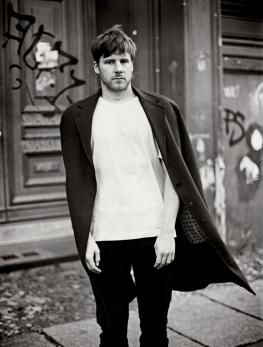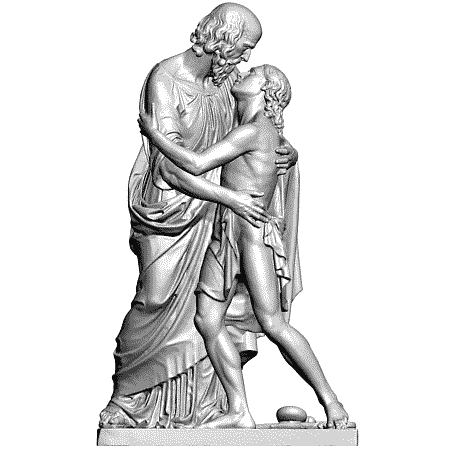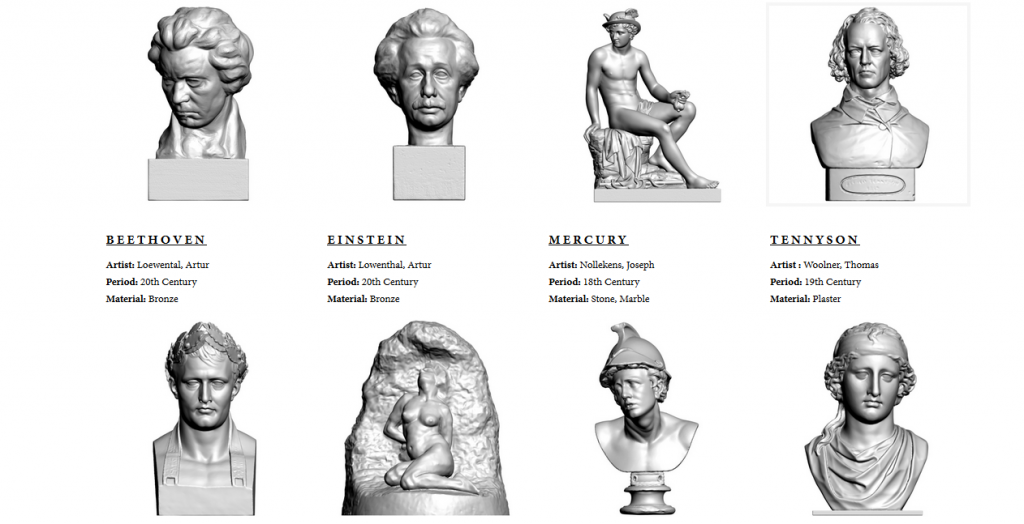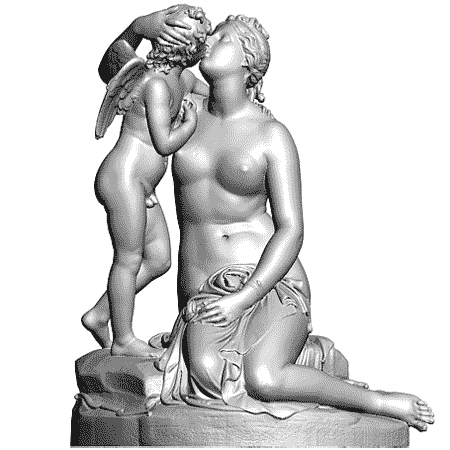Do we ever really own anything when it comes to art, images, video? We know Google never forgets, but perhaps we can build upon some of its current memories, making new things as we “question the value of the ‘authentic’ original image over a copy or reproduction.” Oliver Laric’s art has been deeply rooted in the concept of questioning ownership, with his works over the years not only being interesting and provocative, but also entertaining and humorous at times, as he has made kopienkritik, or ‘copy criticism’ a modern genre and process of his own.
Currently, his latest concepts and work, the Lincoln 3D Scans, are on display, as he works with the Usher Gallery, part of The Collection, which is the county museum and gallery for Lincolnshire in England. There are several interesting events going on simultaneously, all revolving around Laric’s exhibit, and 3D printing in itself.
First, is the display of the work of Oliver Laric, who in 2012 won the prestigious Contemporary Art Society Annual Award for his proposal to create and publish 3D scans of The Collection and Usher Gallery’s archive. His work will be on display through October 26th. It’s easy to see why his idea won, playing on the idea of originality and names being attached to works of art with ownership, along with engaging the public. It’s a great way to bring attention to art, 3D printing, and the Usher Gallery itself. His work will become part of the permanent collection at the Usher Gallery.
Laric’s Lincoln 3D Scans project includes 3D scale models of some of his scans which have been rendered in various textures and colors. Other pieces of his work are included also, as they continue his theme of questioning ownership and authenticity.
Getting in the spirt of Laric’s work, the museum wants to shake things up a little in terms of letting loose with original art and opening it up to new creative renderings, free of liability. The public is encouraged to print copies of their artifacts, just enjoy looking at them, or manipulate them in different ways, digitally. The end goal is that the new ‘art,’ will be shared with the museum and uploaded to their website. The museum has scanned 74 objects for the website, ranging from the museum’s homo heidelbergensis model, to historical artifacts like the Roman Bordeux Altar cast and 19th Century marble sculptures such as John Gibson’s The Hunter and The Dog. The latter two are among the selection which has been printed as part of the exhibition. For more information on some of the objects, click here.
On October 24th, 2014, the museum will host the symposium, “3D Printing: The Creative Future.” Artists, academics and industry professionals will be speaking on various subjects related to 3D printing technology, including:
- James E Smith, who used 3D scanning to create a ‘life model’ for the recent OPEM3 exhibition.
- Michael Eden, ceramicist, who uses 3D printing and scanning to create contemporary studio pottery.
- The Digital Native Academy who will be discussing their audience facing projects using 3D scanning technologies to engage with arts audiences.
- The Conservation Department of The University of Lincoln who will discuss 3D technology in conservation.
To bring things full circle, October 25th will be ‘3D Printing Day’ at the museum, with demonstrations and activities related to 3D printing open to everyone.
This project and all the activities revolving around it are designed to open up The Collection to a wider audience and inspire creativity. All of Oliver Laric’s 3D Scans are available for free download here.
Are you familiar with Laric’s work, or have you visited The Usher Gallery? Let us know, in the Oliver Laric Lincoln Scans forum thread at 3DPB.com.
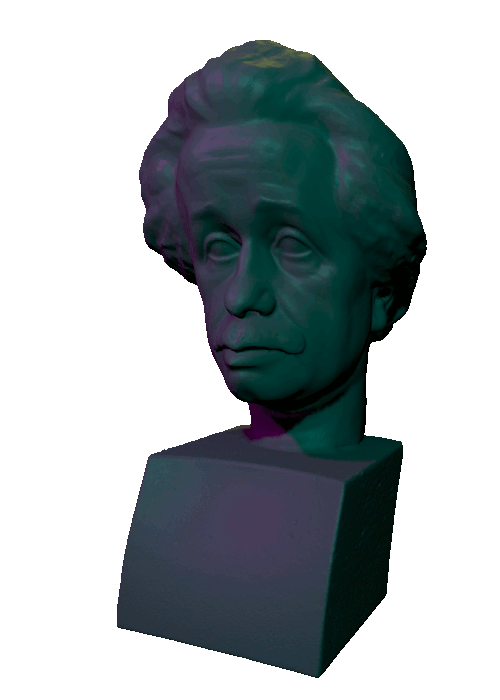
Rendering of Einstein, by Matthew Williamson, from Lincoln 3D Scans offered to the public for download.
Subscribe to Our Email Newsletter
Stay up-to-date on all the latest news from the 3D printing industry and receive information and offers from third party vendors.
You May Also Like
Nylon 3D Printed Parts Made More Functional with Coatings & Colors
Parts 3D printed from polyamide (PA, Nylon) 12 using powder bed fusion (PBF) are a mainstay in the additive manufacturing (AM) industry. While post-finishing processes have improved the porosity of...
3DPOD Episode 193: Flow and What’s Possible in 3D Printing with Ricky Wildman, University of Nottingham
Ricky Wildman is working on 3D printing pills, but, as Professor of Multiphase Flow and Physics at Nottingham, he does a whole lot more. His research encompasses the characterization of...
3D Printing Webinar and Event Roundup: March 17, 2024
It’s another busy week of webinars and events, including SALMED 2024 and AM Forum in Berlin. Stratasys continues its in-person training and is offering two webinars, ASTM is holding a...
3D Printed Micro Antenna is 15% Smaller and 6X Lighter
Horizon Microtechnologies has achieved success in creating a high-frequency D-Band horn antenna through micro 3D printing. However, this achievement did not rely solely on 3D printing; it involved a combination...


